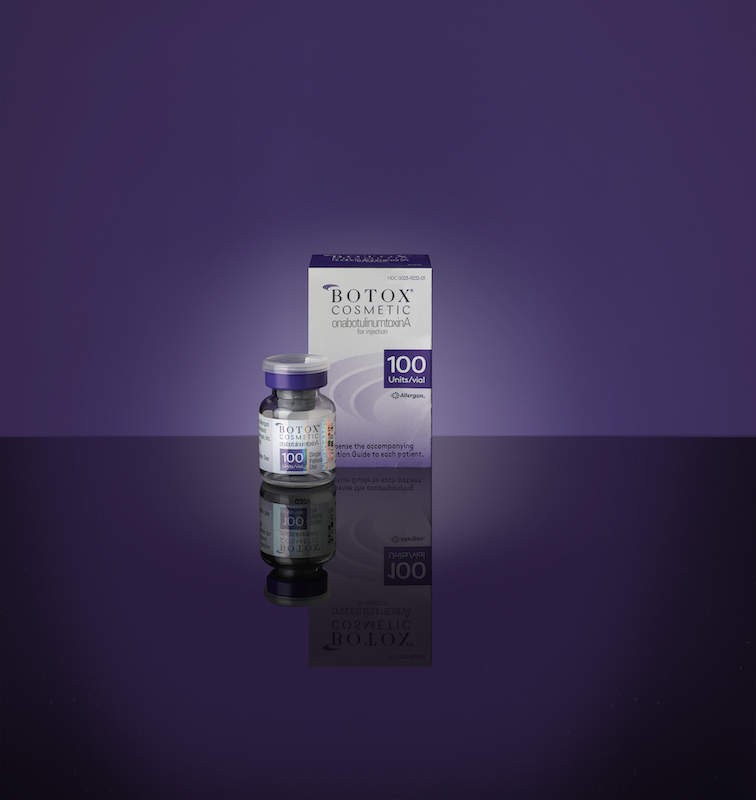Botox for Beginners: Essential Tips and Insights for First Timers
Botox, also known as onabotulinumtoxinA, has become a popular non-surgical treatment for reducing the appearance of wrinkles and fine lines. Whether you’re considering Botox to smooth out stubborn forehead lines or as a preventive measure against aging, this Botox for Beginners guide will provide you with all the information you need as a beginner.
What is Botox?

Botox, the brand name for onabotulinumtoxinA, has revolutionized medspas. As a highly purified protein, Botox works by relaxing the muscles beneath the skin’s surface, leading to a reduction in the appearance of fine lines and wrinkles. This effect is achieved through a non-surgical procedure, making it a popular choice for those looking to achieve a more youthful appearance without undergoing invasive surgery. With more than 4 million people opting for Botox procedures annually, it stands as the most common treatment performed in medspas today. Whether you’re a beginner considering Botox for the first time or a seasoned user, the widespread popularity of this treatment speaks to its effectiveness and reliability.
How Does Botox Work?
Botox operates by blocking specific chemical signals from nerves, primarily the signals that cause muscles to contract. When these signals are inhibited, the targeted muscles relax, which in turn smoothes out the overlying skin and reduces the appearance of wrinkles. This temporary muscle relaxation typically lasts for about three to four months, after which, repeat treatments will be necessary to maintain the desired results. Botox is FDA-approved for multiple uses, both medical and cosmetic, showcasing its versatility. For beginners, understanding this mechanism can demystify the process and highlight the scientific principles that make Botox an effective treatment for various conditions. Whether used to soften forehead lines, crow’s feet, or frown lines, Botox’s ability to deliver noticeable improvements with minimal downtime makes it a compelling choice for many seeking aesthetic enhancement.
Preparing for Your First Botox Appointment
Consultation and Choosing a Provider

Before embarking on your first Botox treatment, it’s essential to schedule a consultation with an experienced professional (such as our botox specialists at Spa In The City in Dallas). This initial meeting is a critical step in ensuring a safe and successful experience. During the consultation, the botox specialist will thoroughly assess your skin’s condition and discuss your aesthetic goals. They will evaluate factors such as the depth and location of your wrinkles, your skin type, your medical history and any previous cosmetic treatments you may have had.
Choosing the right provider is paramount for achieving the best results. Look for a professional with extensive training and experience in administering Botox. Additionally, reviewing before-and-after photos of previous patients can give you a sense of the provider’s skill and aesthetic style. Personal recommendations and online reviews can also be helpful in making your decision. A qualified provider will not only deliver optimal results but also prioritize your safety, minimizing the risk of adverse effects.
Understanding the Procedure
The Botox injection process is straightforward and efficient, making it an ideal option for those with busy schedules. During the procedure, the provider will use a fine needle to inject small amounts of Botox into the targeted muscles. The entire process typically takes about 10 minutes, though the duration may vary slightly depending on the number of areas being treated.
Most patients find the injections to be relatively painless. The sensation is often described as a small pinch or slight pressure. For those with low pain tolerance or anxiety about needles, a topical anesthetic or ice can be applied to the treatment area beforehand to minimize discomfort.
After the injections, there is no need for a lengthy recovery period. Patients can usually resume their normal activities immediately. However, your provider may give you specific post-procedure instructions, such as avoiding strenuous exercise or not lying down for a few hours, to ensure the best results. Understanding the simplicity and minimal downtime of the Botox procedure can help alleviate any concerns and make the experience more comfortable for beginners.
Benefits of Botox
Cosmetic Benefits
Botox is renowned for its ability to significantly reduce the appearance of wrinkles and fine lines, making it a popular choice for those seeking a more youthful appearance. The treatment is particularly effective for addressing:
Crow’s Feet:
These fine lines form around the outer corners of the eyes and are often one of the first signs of aging. Botox injections can smooth these lines, giving the eyes a more refreshed look.
Surprise Lines:
Also known as horizontal forehead wrinkles, these lines appear when you raise your eyebrows. Botox relaxes the muscles responsible for these expressions, resulting in a smoother forehead.
Frown Lines:
Vertical lines that develop between the eyebrows, often called “11s,” can make you look tired or stressed. Botox helps to relax these muscles, softening the appearance of these lines.
By targeting these common areas, Botox can provide a noticeable improvement in skin smoothness and overall facial aesthetics. The treatment is quick, minimally invasive, and requires no downtime, making it an appealing option for those looking to enhance their appearance without the need for surgery.
Medical Benefits
Beyond its cosmetic applications, Botox is FDA-approved for a variety of medical conditions, showcasing its versatility and therapeutic potential. Some of the notable medical benefits include:
Severe Underarm Sweating:
Botox can effectively treat hyperhidrosis, a condition characterized by excessive sweating. By blocking the nerve signals that stimulate sweat glands, Botox helps reduce perspiration in treated areas.
Overactive Bladder Symptoms:
For individuals suffering from urinary incontinence due to an overactive bladder, Botox injections can help relax the bladder muscles, reducing urgency and frequency of urination.
Migraines:
Botox is a well-established treatment for chronic migraines. Regular injections can help prevent headaches in individuals who experience frequent and severe migraines, providing significant relief and improving quality of life.
Eye Muscle Problems:
Conditions such as strabismus (crossed eyes) and blepharospasm (uncontrollable blinking) can be effectively managed with Botox. By relaxing the muscles around the eyes, Botox helps alleviate these symptoms and improve ocular function.
What to Expect After Treatment

Post-Treatment Care
After the treatment, you might notice slight redness, swelling, or bruising at the injection sites. These side effects are generally mild and subside within a few hours to a couple of days. To ensure optimal results and minimize any potential side effects, it’s crucial to follow your provider’s aftercare instructions carefully.
Key post-treatment care tips include:
Avoid Strenuous Activities:
Refrain from engaging in vigorous exercise or physical activities until the next day after the treatment. This helps prevent the Botox from migrating to unintended areas.
Do Not Touch or Massage Treated Areas:
Avoid touching, rubbing, or applying pressure to the treated areas for at least 3-4 hours. This precaution helps keep the Botox in place and ensures it effectively targets the intended muscles.
Stay Upright:
Try to remain in an upright position for a few hours post-treatment. Avoid lying down or bending over excessively to reduce the risk of Botox spreading away from the injection sites.
Follow Additional Provider Instructions:
Your provider may give you specific instructions tailored to your individual needs and treatment plan. Be sure to adhere to these guidelines for the best possible outcome.
Is Botox Safe?
Botox is widely regarded as safe when administered by a professional. It is essential to limit your search to experienced providers (like the staff at Spa In The City) to ensure the treatment’s safety and effectiveness. Adverse effects are rare but can include temporary drooping of the eyelids or eyebrows if injected incorrectly. By choosing a certified practitioner, the risks associated with Botox can be minimized significantly.
Safety Considerations
When considering Botox, safety should be your primary concern. The injections should only be performed in a medical setting to guarantee proper sterilization and technique. It’s important to discuss your medical history and any potential allergies with your provider to avoid complications. Side effects, though rare, can include pain, swelling, bruising at the injection site, and headaches. However, these effects are usually mild and temporary.
Long-Term Safety
Botox has been extensively studied and used for decades, with a proven track record of safety and efficacy. Long-term use of Botox is generally considered safe under the guidance of a qualified provider. Regular treatments can be maintained to manage the appearance of wrinkles and other conditions, with consistent safety when administered correctly.
Conclusion
Botox offers a safe and effective solution for reducing wrinkles and achieving a youthful appearance. By choosing a qualified provider like Spa In the City Dallas and understanding what to expect, you can confidently embark on your Botox Path to Fabulous as a beginner. Whether for cosmetic or medical reasons, Botox can help you look and feel your best.
Call us today at (214) 238-2251 or use our request a consultation form.
FAQ’s
What is Botox, and how does it work?
Botox, is a highly purified protein derived from the bacterium Clostridium botulinum. It works by temporarily blocking nerve signals in the muscles where it is injected. This action prevents the muscles from contracting, which in turn reduces the appearance of wrinkles and fine lines on the skin. By relaxing the underlying facial muscles, Botox helps achieve a smoother and more youthful appearance. Botox is commonly used to treat areas such as crow’s feet around the eyes, frown lines between the eyebrows, and forehead wrinkles.
How long do Botox effects last?
The effects of Botox typically begin to appear within a few days after treatment, with full results visible within two weeks. These effects generally last between 3 to 4 months, depending on individual factors such as the area treated, the amount of Botox used, and the patient’s metabolism. To maintain the desired results, regular treatments are recommended. Most patients schedule follow-up injections every 3 to 4 months to keep their skin looking smooth and youthful.
Is Botox treatment painful?
Botox injections are generally well-tolerated by most patients. The sensation experienced during the injection is often described as a small pinch or slight sting. The procedure is relatively quick, usually taking about 10 to 15 minutes, depending on the number of areas being treated. Any discomfort experienced during the injections is minimal and brief. Some practitioners may apply a topical numbing cream or use ice to further minimize any discomfort during the procedure.
Are there any side effects of Botox?
While Botox is considered safe, some side effects can occur, although they are generally mild and temporary. Common side effects include redness, swelling, or bruising at the injection site. These effects typically resolve within a few days. Other possible side effects include headaches, flu-like symptoms, or temporary drooping of the eyelids or eyebrows if the Botox spreads beyond the intended area. Serious side effects are uncommon, especially when Botox is administered by a qualified and experienced professional. It is important to follow all post-treatment instructions provided by your practitioner to minimize the risk of side effects.
Can Botox be used for medical conditions?
Yes, Botox is not only used for cosmetic purposes but is also FDA-approved for treating several medical conditions. These include chronic migraines, overactive bladder, severe underarm sweating (hyperhidrosis), cervical dystonia (a condition that causes severe neck muscle spasms), and certain types of muscle stiffness and spasms. Botox works in these cases by blocking nerve signals that trigger muscle contractions or glandular activity, providing relief from the symptoms associated with these conditions. It is important to consult with a healthcare provider to determine if Botox is a suitable treatment option for your specific medical condition.